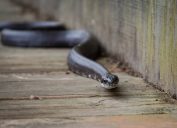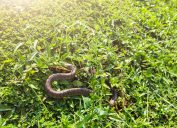6 Top Signs There Are Snakes in Your Yard
Pest experts say these subtle signs can alert you to a slithery visitor.
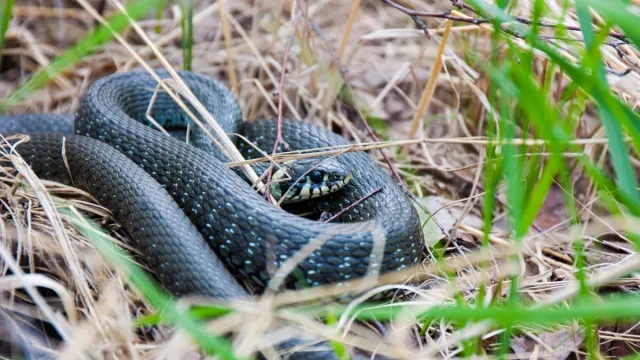
It's fairly easy to tell when animals like raccoons or deer have been in your yard: Your plants will be ransacked or you'll have a trail of leftover garbage. But it's not as simple to spot a snake, as these inconspicuous creatures can slither around relatively undetected. However, pest experts say there are five major signs that there are snakes in your yard. Keep reading to learn what you should be looking for.
RELATED: 8 Surprising Places You're Letting Snakes Into Your Home.
1
Snakeskins
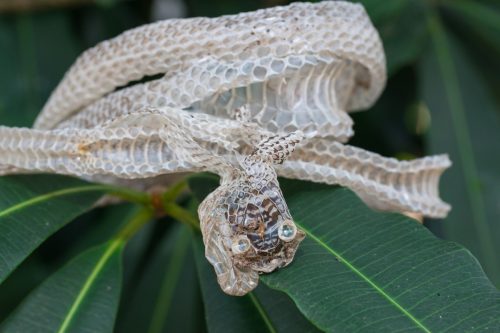
One of the most commonly cited ways to know a snake has been on your property is by finding a translucent snakeskin.
"They shed their skin as they grow, so finding old skin around is a good sign that they're currently living in your yard," explains Toby Cahoon of B&T Pest Control.
"Snakes shed their skin about once every two months," Burns Blackwell, owner of Terminix Triad in North Carolina, tells Best Life. "Most often, they will rub against trees and shrubs to help remove [it]."
The size and shape of the skin can provide insight into the species of snake and how large it is. Look for snakeskins under rocks or woodpiles or by the edge of the garden.
2
Trails
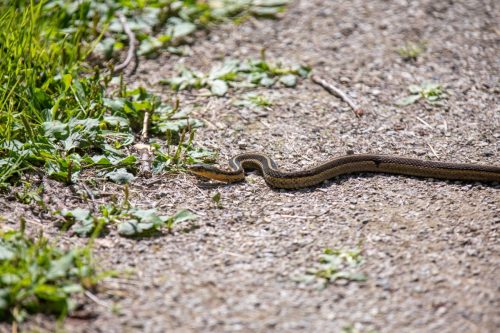
When snakes slither around in dirt or debris, they'll leave a trail that's a series of wide, wavy lines, notes Tom Su, gardening and landscaping expert at Lawn Edging. The pattern and width can also suggest how fast they were moving and what size they were.
READ THIS NEXT: 4 Scents That Attract Snakes to Your Yard, Experts Say.
3
Droppings

Looking for snake droppings may present a challenge since they are similar to those of other animals. But according to experts at Terminix, they typically look like "thick, pasty, dark-brown smears" with a chalky white tip at one end.
Su says what's in it is also a giveaway: "If you're seeing droppings that contain hair, nails, or tiny bone fragments, it's likely from a snake's recent meal. Snakes consume their prey whole, so these indigestible bits pass right through."
4
Hissing sounds

If you notice some subtle yet strange noises in your yard, it could signal that a snake is present.
According to Pest Pointers, hissing is one of the most common sounds a snake can make, which they do to intimidate potential intruders or predators. Depending on the type of snake, they can also rattle their tails, whistle, or create a popping noise to defend themselves.
READ THIS NEXT: 8 Surprising Things in Your Yard That Attract Mice to Your Home.
5
Holes in the dirt
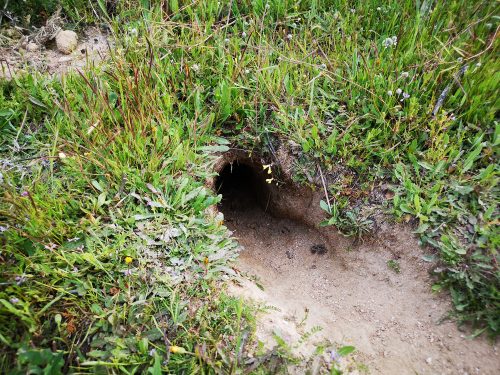
A common misconception is that noticing small holes in the dirt can be a sign that snakes have moved in—especially if you happen to catch sight of one slithering its way inside one to hide. But according to experts, they're not the ones responsible for digging up your lawn.
"Snakes generally can't make their own nests because they don't have paws and they don't have the mental capacity to create nests. But they will take over old rodent nests as well as use underground burrows and holes," explains Blackwell. "Snake holes are hard to identify because they often use leftover mole or vole holes, so you should look for snakeskin in and around these holes to identify that it's home to a snake and not a mole."
Snakes can also squeeze into small spaces, so the holes tend to be discreet. Check for gaps in rocks, cracks in foundation burrows, or leftover rodent burrows, Su advises.
6
A sudden lack of rodents
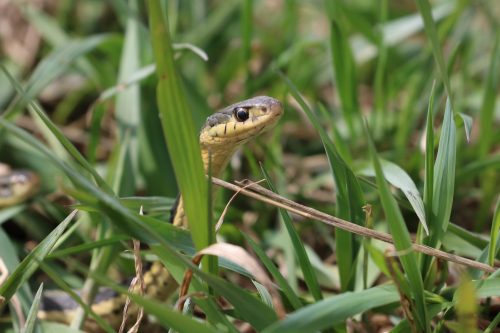
Snakes feast on rodents: mice, rats, and other small mammals. "Snakes eat where they live," Thomas Ward, a biologist with Critter Control, tells Best Life.
If you've seen rodents in your vicinity, only to have a sudden and notable absence, that could be a clue there's a snake nearby. "Any time I've had a snake problem, it's been after a period of seeing zero rodents for a while," shares Rick Berres, the owner of Minnesota-based home renovation company Honey-Doers. "There are usually some signs, but it's always after a sudden disappearance."
RELATED: 8 Things in Your Yard That Are Attracting Snakes to Your Home.
There are easy ways to prevent snakes from coming in.
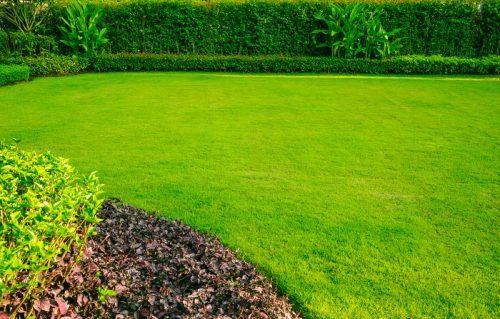
Daniel Schoenecker, wildlife control specialist at Clark's Termite & Pest Control, says the first and probably most important way to keep snakes out of your yard is identifying and clearing out any sources of food. "Identify the species of snake to determine the food source and then eliminate/control it," he says.
In addition to removing food, Schoenecker advises getting rid of anything that can provide a habitat for snakes, such as log piles, large rocks, or overgrown vegetation. And finally, if you do become aware of a snake problem in your yard, it's always advisable to call in a professional.
For more pest advice sent straight to your inbox, sign up for our daily newsletter.
